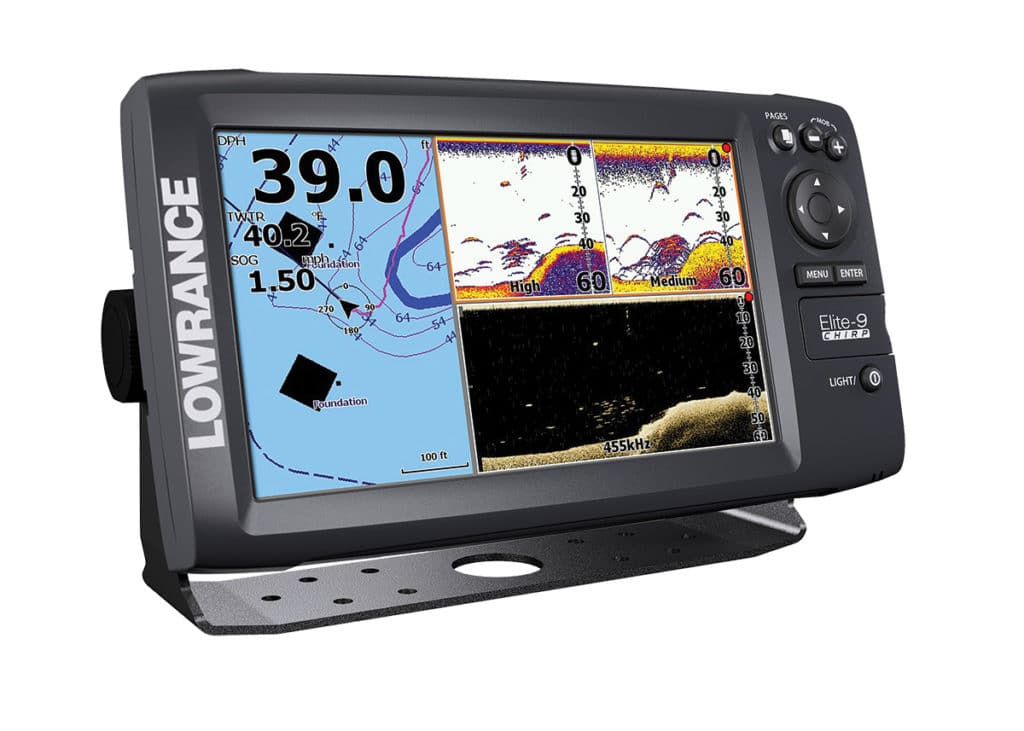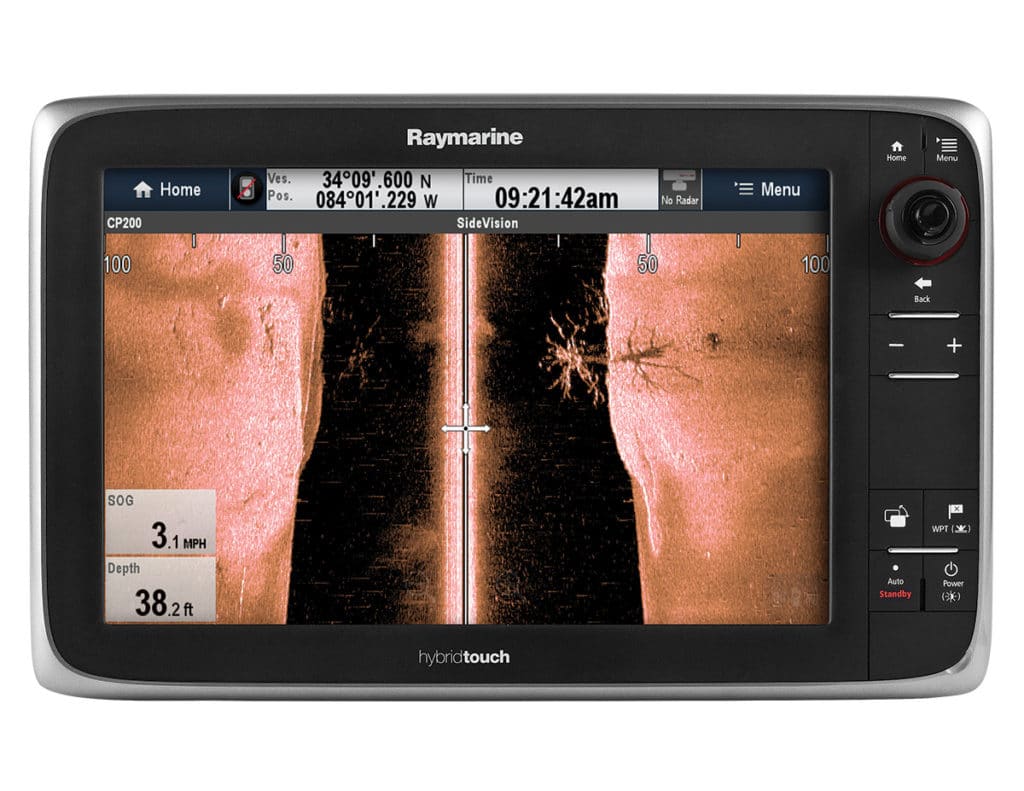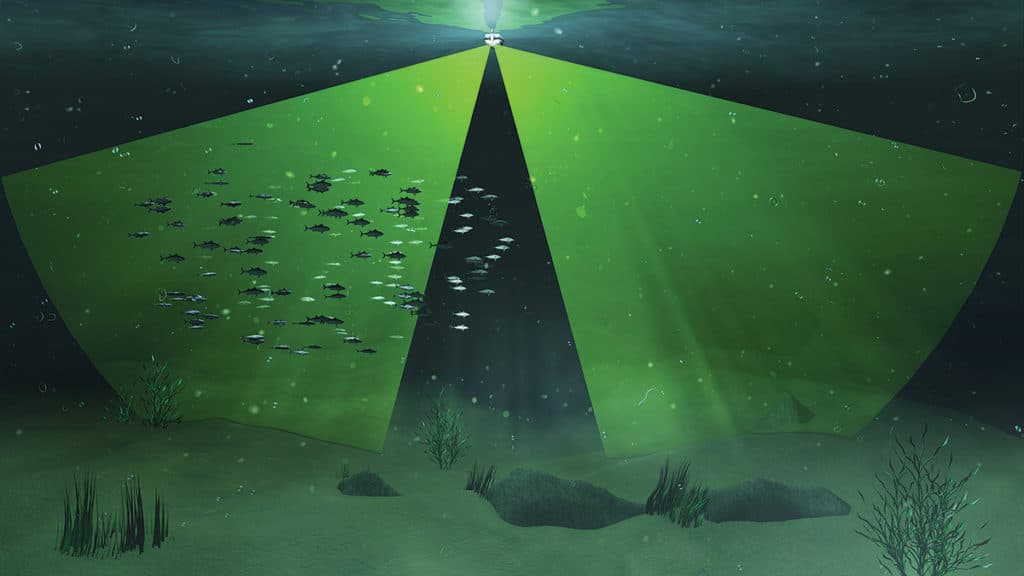


Fishing is not so much a pastime as a passion. If you are hooked with the angling fever, you want the best tools to help you succeed. Few tools are more effective than sonar technology in the form of a fish finder (aka sounder). Here is an overview of some of the latest and traditional sonar technologies.
CHIRP
CHIRP (an acronym borrowed from radar technology meaning compressed high-intensity radar pulse) is probably the most significant advance in sonar technology since the invention of the fish finder. Conventional fish finders search the waters with a single frequency signal. CHIRP transmits across a wide spectrum of sonar frequencies. This results in the ability to detect fish at far greater depths than with conventional sonar, better discriminate between closely spaced fish targets and reject noise and ”clutter” that can mask fish targets and structure. CHIRP is available on an increasing number of models of most fish-finder manufacturers. Look for CHIRP sonar technology to dominate fishing electronics in the future.
Side-Imaging
You could have the most sensitive and sophisticated fish finder revealing what is directly beneath the hull of your boat, yet miss seeing schools of fish just off to port or starboard. Technology known variously as side scan, side vision, structure scan or side-imaging offers high-resolution, detailed imaging up to 180 degrees to the side at ranges of up to 600 feet in both directions. For clarity, side-scan images tend to be reproduced in shades of a single color. Unlike an image from a conventional fish finder, the picture on a screen is more akin to a medical ultrasound image. It produces high-resolution, almost lifelike views of fish, bait, rocks, vegetation, wrecks and other underwater objects.
Down-Imaging
Similar to side-imaging, but without side-to-side scanning, down-imaging concentrates high-resolution or CHIRP scans to create lifelike depictions of bottom contours, marine life and any vegetation or physical objects down to about 600 feet. Down-imaging can be particularly revealing when it is viewed in split-screen mode, so as to compare the display with that of a conventional fish finder.
Digital Signal Processing (DSP)
When shopping for a new fish finder, look for those that have digital signal processing. DSP is sort of “digital intelligence” that has the ability to distinguish between unwanted noise and desirable signals such as fish, bait schools and bottom structure. DSP serves as a noise filter that scrubs the screen clean for a more clear and unobstructed picture.
Noteworthy Fish Finders
Furuno
Furuno’s FCV627 (5.7-inch display, $995) and FCV857 (8.4-inch display, $1,695) fish finders offer Accu-Fish, a tool than can help identify fish size based on signal echo strength. A special algorithm analyzes a fish’s signal and displays it as a fish symbol ranging from 3 to 60 inches. A circle or square can also be placed around a fish mark to indicate a small fish (up to 14 inches) or large one (over 14 inches).
Dragonfly
Dragonfly is a Raymarine product that packages high-technology fish finding into a compact stand-alone unit suitable for any size craft. CHIRP and DownVision are two powerful sonar tools that make the Dragonfly (5.7-inch screen, starting at $649) and Dragonfly 7 (7.7-inch screen, starting at $849) a natural choice for the serious fisherman on a budget.
Garmin
Garmin’s Fishing My-Cast places an expert fishing adviser at your side by way of an Android mobile device. This app provides an up-to-the-minute guide to locate the best fishing spots, times to fish, fish activity, current weather and a log to detail your fishing results.
Si-Tex
The Si-Tex SST-110 ($429) is a precision water temperature monitor with 0.01 degree of accuracy. It provides a large alphanumeric display housed in a 4.3-square-inch case. An on-screen arrow shows if temperatures are increasing or decreasing.









